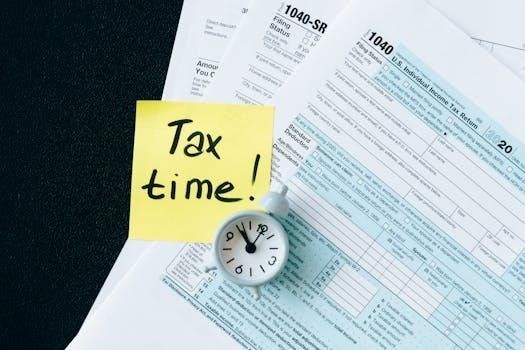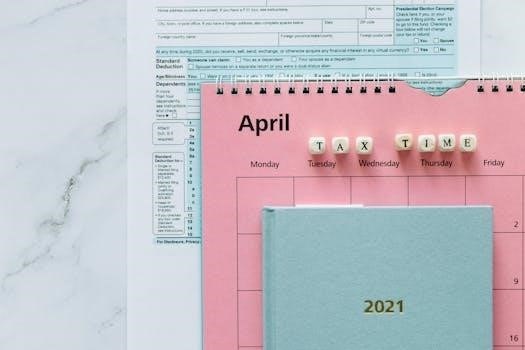Childrens Services Award Pay Guide⁚ An Overview
The Childrens Services Award MA000120 establishes minimum pay and conditions for the sector in Australia. It ensures fair compensation for those caring for children. Updated annually, this guide provides a summary of pay rates, allowances, and penalties.
Purpose of the Childrens Services Award
The Childrens Services Award MA000120, crafted by the Fair Work Commission, serves as a cornerstone for employment standards within the Australian childcare sector. Its primary aim is to guarantee equitable compensation and fair working conditions for individuals dedicated to the care, education, and well-being of children across diverse settings. This includes early learning centers, kindergartens, and other childcare facilities.
The award specifies minimum pay rates based on qualifications and roles, ensuring employees receive at least the legally mandated wages. It also addresses crucial aspects like allowances, penalties, and leave entitlements, fostering a supportive and regulated work environment. By setting these standards, the award promotes stability, professionalism, and quality in childrens services.

Understanding Pay Rates
Navigating the Childrens Services Award involves understanding minimum wage requirements. Pay rates depend on qualifications and position. Casual employees have different pay structures. This section clarifies these aspects for employers and employees.
Minimum Wage Requirements
The Childrens Services Award dictates the minimum pay rates for employees in the early childhood education and care sector. These rates, updated annually by the Fair Work Commission, form a safety net, ensuring all workers receive fair compensation. As of July 1, 2024, the rates have been updated to reflect the latest minimum wage increase. Employers must adhere to these minimums, even if they currently pay above the award. Failure to comply with these requirements can lead to legal repercussions; Queensland employees might have additional transitional pay equity order considerations that are not included in the standard pay guide. Junior employees have different rates.
Impact of Qualifications and Position
The Childrens Services Award stipulates varying pay rates based on an employee’s qualifications and position within the childcare setting. Higher qualifications, such as a Certificate III or Diploma, typically correspond to higher pay levels. Similarly, different roles, such as an Educator or Centre Director, have distinct pay scales. The award outlines specific classifications for each position, detailing the minimum pay rate applicable. Understanding these classifications is crucial for both employers and employees to ensure accurate compensation. This structure acknowledges the value of experience, training, and the level of responsibility associated with each role, ensuring fairer wages.
Casual Employee Pay
Casual employees within the Childrens Services sector receive a different pay structure compared to their full-time or part-time counterparts. Their hourly rate incorporates a casual loading, compensating for the lack of benefits such as annual leave and sick leave. This loading is added on top of the base hourly rate for the equivalent full-time position. Therefore, a casual employee earns more per hour than a full-time employee in the same role. This additional loading is mandated by the Childrens Services Award to ensure fair compensation for the inherent instability of casual employment. It is crucial to consult the official pay guide for the exact percentage applied.

Allowances and Penalties
The Childrens Services Award includes provisions for allowances and penalties. These ensure employees are compensated for specific circumstances, such as broken shifts or additional responsibilities, beyond their standard hourly rate.
Wage-Related Allowances
The Childrens Services Award MA000120 specifies several wage-related allowances. These allowances compensate employees for specific aspects of their work.
They are calculated based on the standard rate, defined as the minimum weekly rate for a Childrens Services Employee Level 3.1 (Certificate III qualified). Examples include allowances for broken shifts, which provide additional compensation when work is interrupted. The award outlines eligibility criteria and calculation methods for each allowance. It’s crucial to consult the official award document or the Fair Work Ombudsman’s Pay and Conditions Tool for precise details. Correctly applying these allowances ensures compliance with the award and fair compensation for employees.
Broken Shift Allowance
The Childrens Services Award MA000120 includes a broken shift allowance; This allowance compensates employees when their work is interrupted by unpaid breaks. The purpose is to address the inconvenience and potential disruption caused by split shifts; The broken shift allowance is calculated as a specific amount per day. The Fair Work Ombudsman provides detailed information about the definition and operation of allowances. The broken shift allowance amount is subject to annual adjustments. To ensure accurate payment, employers should regularly consult the latest pay guides and award updates. Broken shift allowance rates are determined by clause 15.1 of the award.

Pay Guide Updates and Resources
Stay updated with the latest Childrens Services Award changes through the Fair Work Ombudsman resources. Access the pay guide document for current pay rates, allowances, and penalties, ensuring compliance and fair compensation.
Fair Work Ombudsman Resources
The Fair Work Ombudsman offers numerous resources to help understand the Childrens Services Award. These resources include pay guides, which are updated annually, reflecting changes to minimum wages and award conditions. You can access these guides to ensure you’re paying or receiving the correct entitlements.
The Ombudsman also provides tools and templates to assist with record-keeping and compliance. For specific advice on your situation, it’s recommended to consult an employment advisory service. Their website also provides information about allowances, penalties, and overtime.
The Fair Work Ombudsman acknowledges the Traditional Custodians of Country throughout Australia and their continuing connection to land, waters, skies and communities.
Accessing the Pay Guide Document
The Childrens Services Award MA000120 Pay Guide is readily available for download in DOCX format. This document summarizes pay rates, allowances, and common penalties relevant to the award.
You can typically find the most recent version on the Fair Work Ombudsman’s website. Ensure that you are using the correct pay guide, as pay rates change annually, usually from the first full pay period on or after July 1st.
Check the publication date on the document to confirm its currency. The pay guide offers a comprehensive overview, but always refer to the full award document for detailed definitions and operational specifics.

Leave Entitlements
Employees under the Childrens Services Award are entitled to various leave types. This includes annual leave, with potential leave loading, and other statutory leave entitlements as per Australian employment standards.
Annual Leave and Leave Loading
Employees covered by the Childrens Services Award are entitled to annual leave. This leave provides paid time off from work, allowing employees to rest and recharge. Under the Childrens Services Award, a rate of 17.5% leave loading on top of their annual leave is applied when an employee takes paid time off. This leave loading serves as additional compensation during their vacation period.
The specific amount of annual leave and the conditions for taking it are detailed within the award. It’s crucial for both employers and employees to understand these provisions to ensure compliance. Consult the full award document for precise details on accrual, usage, and any specific requirements related to annual leave and leave loading. Correct application ensures fair treatment and legal compliance within the workplace.

























